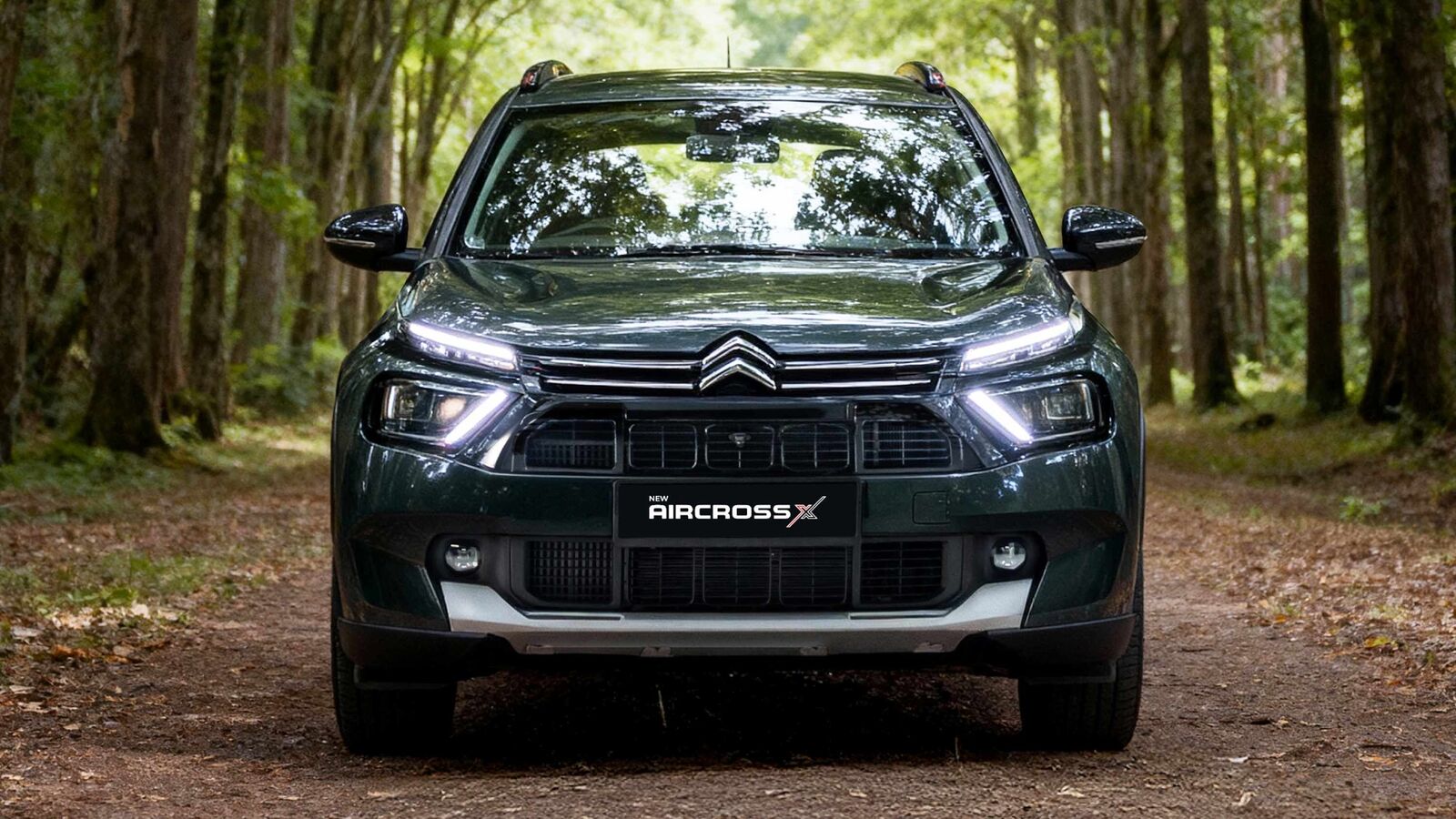When it debuted in August 2020, the second-gen Mahindra Thar was a massive step forward from its archaic predecessor. It moved the game ahead in performance, comfort and usability while still furthering off-road ability. But some compromises still remained – mainly ride quality, rear seat access and luggage space. The Roxx addressed these to a large extent offering a more family-friendly SUV with the Thar’s rugged persona. Now the 3-door gets an update with a few features from the Roxx and a few ergonomic fixes too. Mahindra gave us a brief go at it, at the brand’s off-road test track in Igatpuri.
Mahindra Thar design and engineering: 8/10
Despite minimal changes, the Thar is as handsome as ever

At first glance, it’s hard to tell the 2025 Thar apart from the 2020 model. Up front, the 7-slat grille is now body-coloured and a dual-tone bumper makes a return. Lighting is unchanged: halogen headlamps and fog lamps, LED DRLs and LED tail-lamps. While some might rue the absence of LED units, halogens tend to do a better job in incremental weather. The side profile is identical, with the same 18-inch wheels running fat 255-section all-terrain rubber. The eagle-eyed might spot a rear wiper and a rear-view camera housed in the spare wheel – both new additions. It also adds two colours from the Roxx palette – Tango Red and Battleship Grey. So while the changes are minimal, they don’t take away from the Thar’s appeal. Five years on, its rugged design still has plenty of wow factor.
Mahindra Thar interior space and comfort: 7/10
Small ergonomic changes greatly improve comfort for front passengers

In keeping with its purpose, the Thar’s interior retains its all-black theme with hard-wearing, easy-to-clean materials all around. The dashboard’s design is familiar but it now gets the Roxx’s steering wheel, indicator and wiper stalks and a new touchscreen. It carries four on seats trimmed in black leather with fabric centres, although access to the rear bench is as challenging as ever. Boot space remains a weak point too. The front seats are large and supportive, while the driver’s seat adjusts for height to give you a commanding view out.

While the cabin might look largely unchanged, Mahindra has made some important updates based on customer feedback. The A-pillar now has chunky grab handles to help hoist yourself in. The centre console has been revised, gaining an adjustable armrest with storage underneath, while the window switches have taken their rightful place on the door panels. Automatic versions also get a much-needed dead pedal. Refuelling is easier too, thanks to an internal fuel door opener – no more handing over the key at the pump. Rear passengers now get AC vents, a Type-C USB port and a 12V socket. They may be minor changes, but together they make a big difference.
Mahindra Thar features and safety: 6/10
10.25-inch infotainment system and rear-view camera headline the updates

The most notable update is the infotainment system – out goes the dated 7-inch unit and in comes a crisp 10.25-inch screen borrowed from the Roxx, with wired Apple CarPlay and Android Auto and Gen 2 of the Adventure Stats off-road telemetry screen. There’s also a rear washer-wiper to get a better view of the tailgate mounted spare and a rear-view camera to actually see past it. The rest of the feature set is unchanged. What would have been welcome, though, are curtain airbags. As it stands, the Thar continues with dual airbags, ESP with roll-over mitigation, hill hold and descent control, ABS, ISOFIX mounts on the rear seat and a structural roll cage.
Mahindra Thar performance and refinement: 8/10
Powerful, refined petrol and diesel engines provide strong performance
The Thar continues with the 1.5-litre diesel, 2.2-litre diesel and 2-litre petrol – the former only available on the 4×2. All engines come mated to a 6-speed manual, while the latter two can be had with a 6-speed torque-converter automatic. The higher output versions of the larger diesel and the petrol on the Roxx are not available on the 3-door.
We sampled the 2.2-litre mHawk diesel producing 132hp and 300Nm of torque. Impressive figures, but the highlight is the refinement and smoothness of the motor. Diesel clatter is well contained even at higher revs, and torque delivery is linear – useful when crawling over obstacles off-road. Those seeking outright performance might prefer the mStallion petrol with its 152hp, 300Nm and 10.2-second 0–100kph time, but the grunty diesel is a better match for the Thar’s character.
Mahindra Thar ride comfort and handling: 6/10
Ride quality is still lumpy, hydraulic steering requires effort at low speeds

Underneath is the same proven hardware that made such a capable off-roader – a ladder-frame chassis, double-wishbone front suspension and a multi-link rear with coil springs. Wheel articulation is superb, helping the chunky JK Tyre Ranger ATs find grip even in slippery mud, aided by a mechanical locking differential on the 4X4. The RWD makes do with a brake locking diff. With low range engaged, the Thar breezes through pretty much any obstacle at Igatpuri. It gives off a sense of invincibility, but this comes at the expense of ride comfort.
The second-gen was leaps better than its predecessor on tarmac, but there was still room for improvement. Mahindra hasn’t made hardware changes with this update, but has tweaked the suspension setup over the last five years. They claim anyone moving from a 2020 to a 2025 Thar will feel an improvement. We couldn’t directly verify this, as our drive was only the Igatpuri facility, but we’ll soon test this out on the highways. Also worth noting is that the hydraulically assisted steering feels heavy compared to modern EPAS systems.
Mahindra Thar mileage and fuel economy: 6/10
Diesels are slightly more frugal than the petrol, but none are very economical

In terms of fuel efficiency, our 2021 Thar road test revealed the petrol auto is thirsty at 7kpl in the city and 9.3kpl on the highway. The mHawk diesel manages 12kpl in the city and around 12.6kpl on the highway for the manual, slightly less for the auto.
Mahindra Thar price and verdict: 8/10
More comfortable and usable than before, while retaining its personality

The 2025 Thar now starts at Rs 9.99 lakh – Rs 32,000 less than before – and goes up to Rs 13.99 lakh for the 4×2. The 4×4 diesel is priced at Rs 15.49 lakh for the manual and Rs 16.99 lakh for the automatic, while the petrol-manual costs Rs 14.69 lakh, with the automatic at Rs 16.25 lakh.
Mahindra has done a good job of incorporating customer feedback and a few niceties from the Roxx into the Thar. Make no mistake, this is not a 3-door Roxx, but it has made the 3-door Thar that much more liveable with its focus still skewed towards off-road – and that’s no bad thing. With the Roxx chasing volumes, the new 3-door Thar is free to dig deeper into its niche which it had made good headway with, its second generation.



